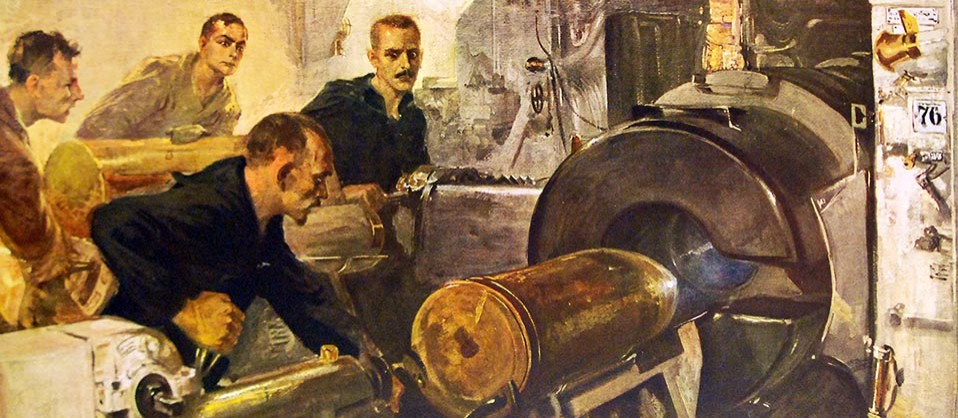
German U-Boat Attacks: 1915-17
German U-Boat Attacks: Pre-War
Following the assassination of Archduke Franz Ferdinand on June 28, 1914, and the start of World War I in Europe that August, American and German relations went from crisis to crisis due to Germany's insistence on submarine warfare to defeat the Allies. In the course of Germany's action on a war against merchant shipping, ships of neutral countries, including the U.S. were sunk or captured, with the loss of American lives. The first U.S. merchant vessel captured was SS William P. Frye on January 27, 1915 by German auxiliary cruiser Prinz Eitel Friedrich. SS Gulflight was the first merchant vessel torpedoed by a German U-boat, U-30 , on May 1, 1915, resulting in 3 killed. Six days later, 128 Americans lost their lives when the British passenger liner Lusitania was sunk by German U-Boats. 1,198 people perished overall in the attack. Several American lives were also lost when the French steamer Sussex was sunk by a German U-Boat on March 24, 1916. In response to these actions and despite German pledges to limit its use of submarine warfare, Americans began to prepare for war. In 1916, Congress passed the Naval Act, greatly expanding and strengthening the U.S. Navy. Notably, additional money was allocated to warships, the Naval Reserve force was strengthened, and the number of officers and enlisted men increased. Though the U.S. Navy did not participate in the Naval Battle of Jutland, May 31 to June 1, 1916, the battle was the largest and the only naval battle in which battleships fought each other during the war. The British were commanded by Admiral Sir John Jellicoe, and the Germans were commanded by Vice Admiral Reinhard Scheer. 151 British and 99 German ships took part. Though tactically a draw, the battle did allow the British to maintain superiority in the Northern Atlantic and to continue their crippling blockade of Germany, in which the U.S. Navy later helped following entry into war. Following German Kaiser Wilhelm II's order on February 17, 1917 for U-Boats to sink all Allied or neutral ships found in zones around Britain, France, Italy, and in the eastern Mediterranean, President Woodrow Wilson severed diplomatic relations with Germany and ordered American merchantmen to be armed entering war zones.
Image: Lot-9630-14: Battle of Jutland, May 31, 1916. Shelling a large vessel during battle. Artwork by Felix Schwormstadt. Halftone image from the publication, "The Imperial Navy in the World War, 1914-17". Courtesy of the Library of Congress.



